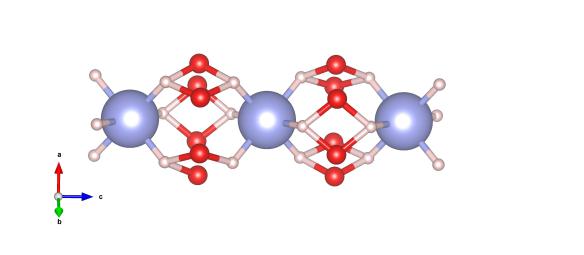Impossible chemistry: making the unreactive react
What does it look like?

The large blue atoms are xenon, the pink are hydrogen and the red are oxygen. Image generated by the VESTA (Visualisation for Electronic and STructural analysis) software http://jp-minerals.org/vesta/en/
What is it?
Xenon is an incredible element, but there's one thing it doesn't like doing all that much: reacting with other elements. Cast your mind back to high school chemistry and you know why this is. Like the other noble gases, argon and neon to name a couple, they have full outer shells of electrons, no room to accept any others and none to give away for the formation of bonds with other elements. In fact the first compound with a noble gas wasn't discovered until 1962.
All of the gas giants in our solar system have a problem with xenon: there's not enough of this noble gas in their atmospheres. The thought is if we know this is occurring, and how, we would understand a lot more about how the gas giants were built and evolved. Could the noble gases have been gobbled by these planets' interiors? If so, there has to be a stable way that they bind to the planetary materials. If xenon got sucked into the interior and didn't react it would soon bob back up to the planetary surface and we really should see it there.
Two of the gas giants, Uranus and Neptune, are known as icy gas giants as they are made of water (mixed with ammonia and methane). Hence, it was of interest to see if xenon could react with water at conditions akin to that of the hot ice layers found on these planets. These conditions can be recreated with lasers to heat the sample within a diamond anvil cell.
Sitting there, at pressures and temperatures that you would find in the centre of the gas giant planets, 50 GPa and 1500 K – there was a reaction! And in fact when the laser was turned off and the sample returned to 300 K, this product was still there. A whole new material was created, one that the team later determined to be made up of xenon, oxygen and hydrogen. A reaction product between xenon and water, success!
This work showed that xenon could react with ice, and this could mean that Uranus' and Neptune's missing xenon is actually sat in it!
Where did the structure come from?
This structure was discovered by Sanloup et al., and published in Physical Review Letters in 2013. You can read more about this discovery (and the diamond explosions that occurred) in a piece first published on The Conversation.






